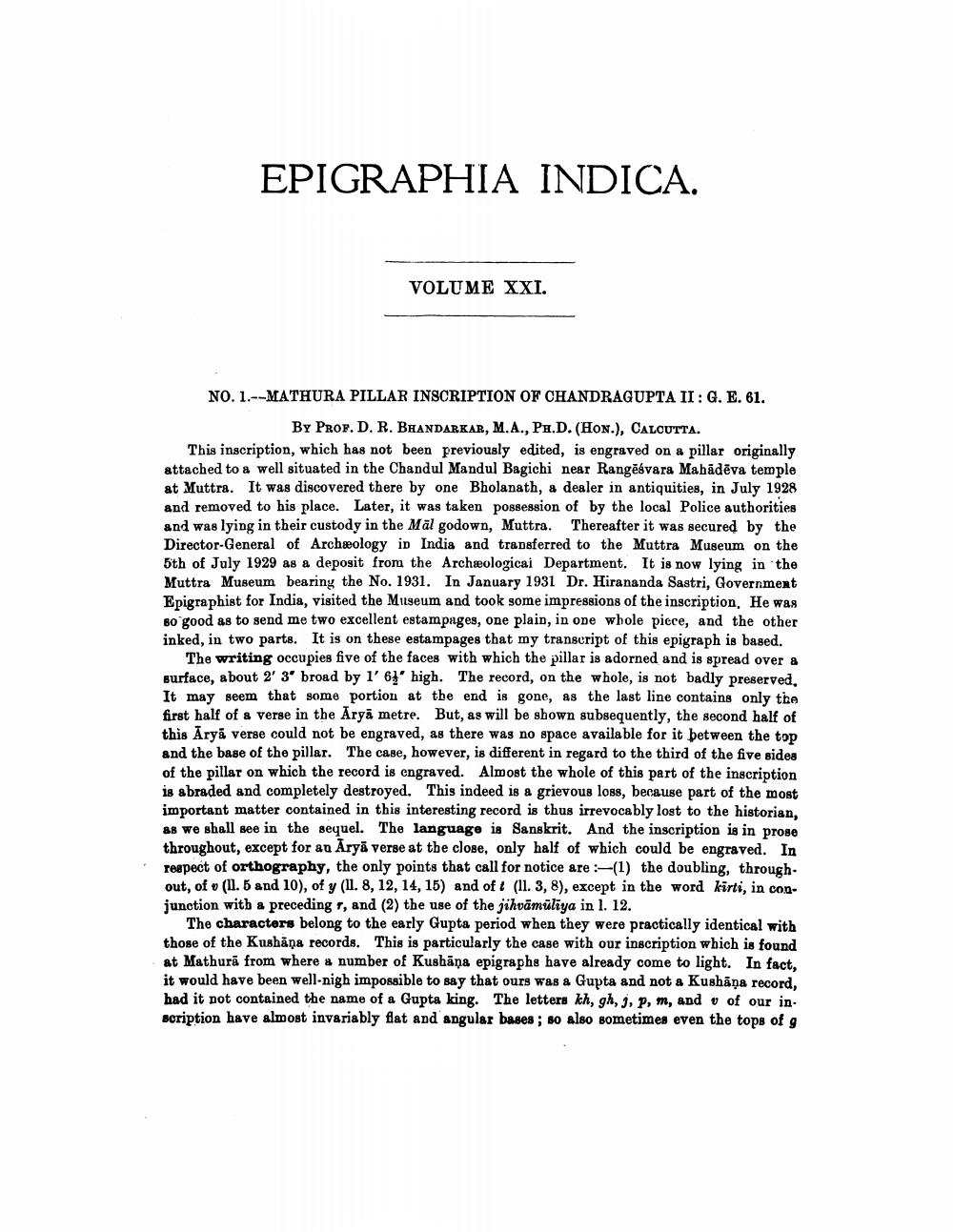________________
EPIGRAPHIA INDICA.
VOLUME XXI.
NO. 1.--MATHURA PILLAR INSCRIPTION OF CHANDRAGUPTA II: G. E. 61.
BY PROF. DR. BHANDARKAR, M.A., PH.D. (Hon.), CALOUTTA. This inscription, which has not been previously edited, is engraved on a pillar originally attached to a well situated in the Chandul Mandul Bagichi near Rangēsvara Mahādēva temple at Muttra. It was discovered there by one Bholanath, a dealer in antiquities, in July 1928 and removed to his place. Later, it was taken possession of by the local Police authorities and was lying in their custody in the Māl godown, Muttra. Thereafter it was secured by the Director-General of Archæology in India and transferred to the Muttra Museum on the 5th of July 1929 as a deposit from the Archeological Department. It is now lying in the Muttra Museum bearing the No. 1931. In January 1931 Dr. Hirananda Sastri, Government Epigraphist for India, visited the Museum and took some impressions of the inscription. He was BO good as to send me two excellent estampages, one plain, in one whole piece, and the other inked, in two parts. It is on these estampages that my transcript of this epigraph is based.
The writing occupies five of the faces with which the pillar is adorned and is spread over & surface, about 2' 3' broad by l' 61' high. The record, on the whole, is not badly preserved. It may seem that some portion at the end is gone, as the last line contains only the first half of a verse in the Aryā metre. But, as will be shown subsequently, the second half of this Āryā verse could not be engraved, as there was no space available for it between the top and the base of the pillar. The case, however, is different in regard to the third of the five sides of the pillar on which the record is engraved. Almost the whole of this part of the inscription is abraded and completely destroyed. This indeed is a grievous loss, because part of the most important matter contained in this interesting record is thus irrevocably lost to the historian, as we shall see in the sequel. The language is Sanskrit. And the inscription is in prose throughout, except for an Aryā verse at the close, only half of which could be engraved. In respect of orthography, the only points that call for notice are (1) the doubling, through out, of v (11.5 and 10), of y (11. 8, 12, 14, 15) and oft (ll. 3, 8), except in the word kirti, in conjunction with a preceding r, and (2) the use of the jihvämüliya in l. 12.
The characters belong to the early Gupta period when they were practically identical with those of the Kushana records. This is particularly the case with our inscription which is found at Mathură from where a number of Kushāņa epigraphs have already come to light. In fact, it would have been well-nigh impossible to say that ours was a Gupta and not a Kushāņa record, had it pot contained the name of a Gupta king. The letters kh, gh, j, p, m, and v of our inscription have almost invariably flat and angular bases ; 80 also sometimes even the tops of g




